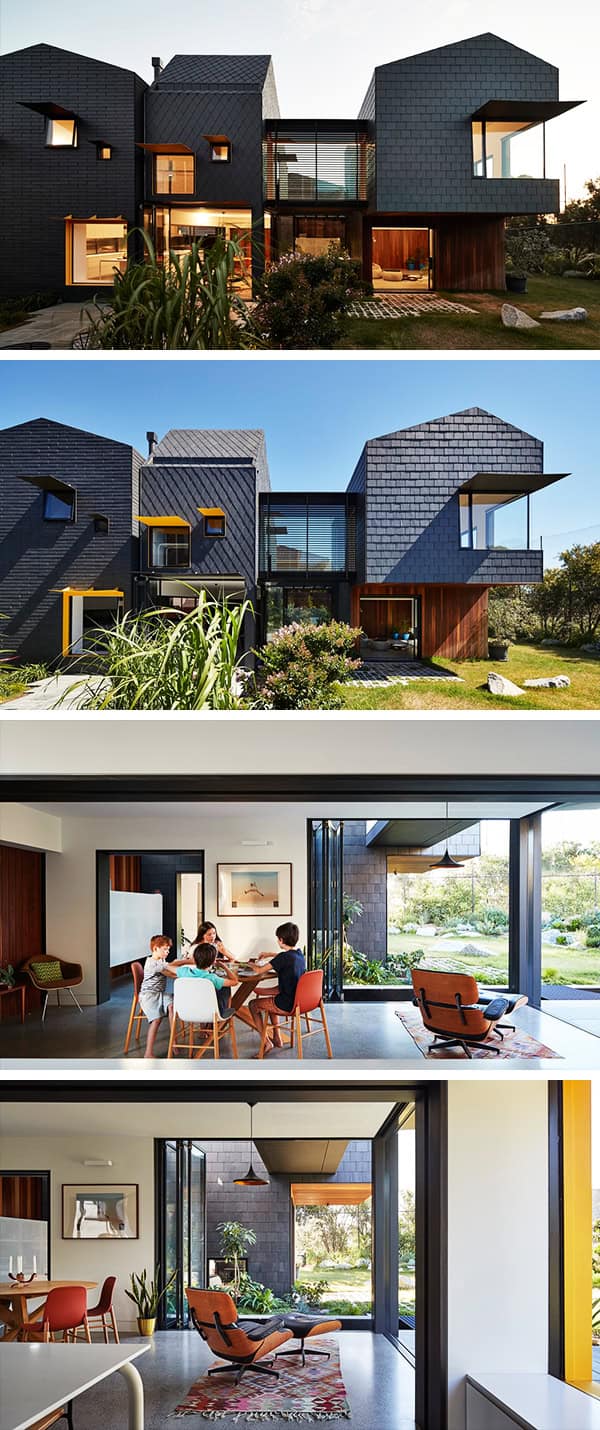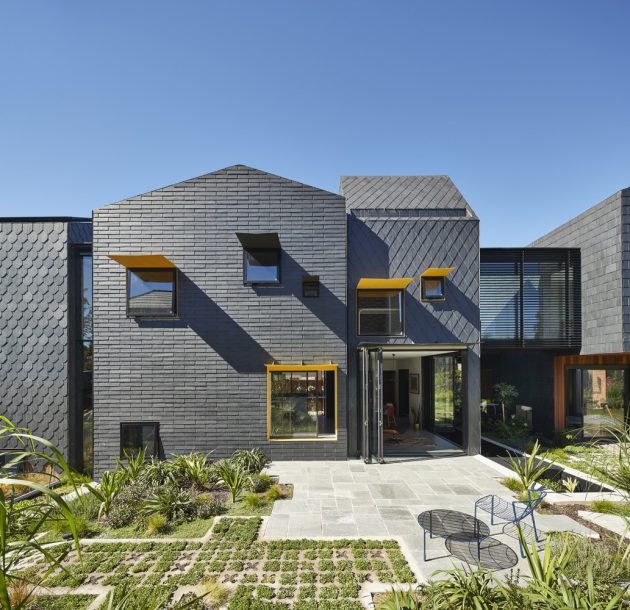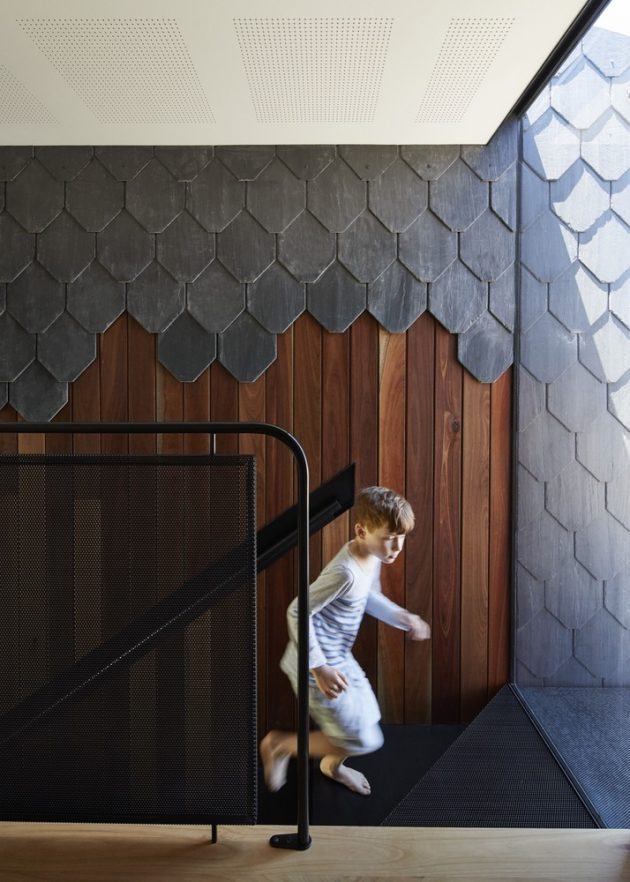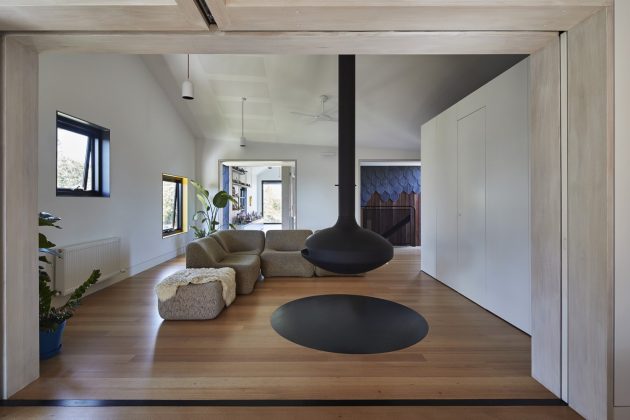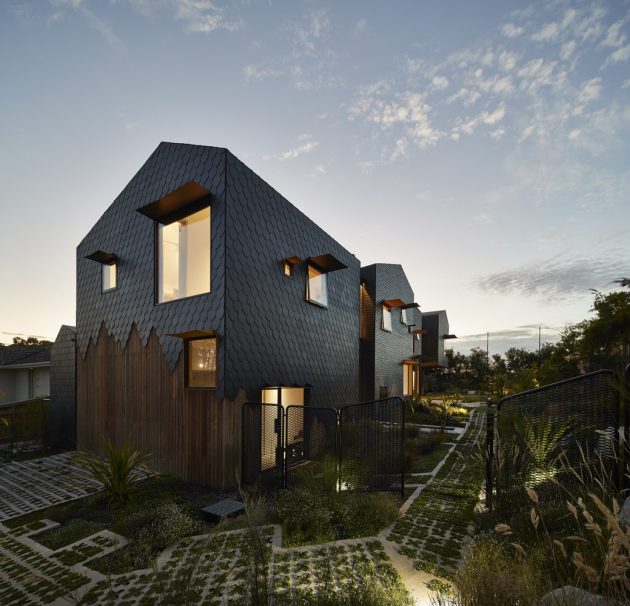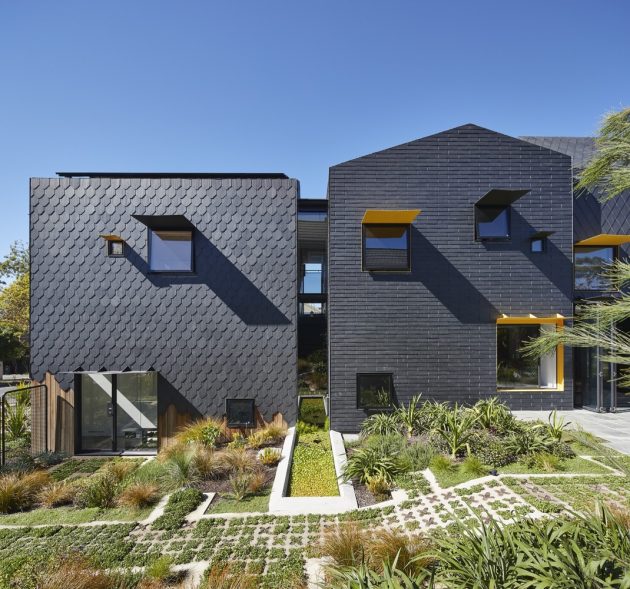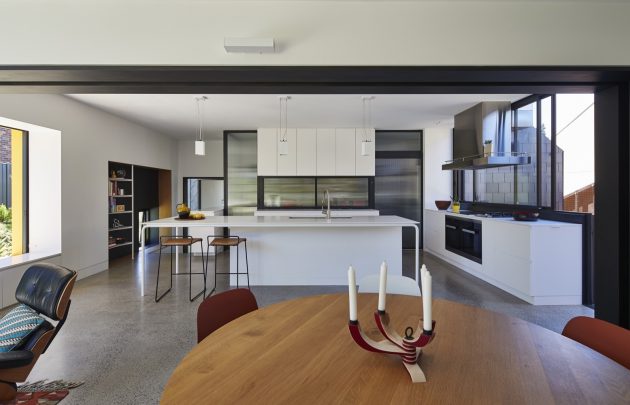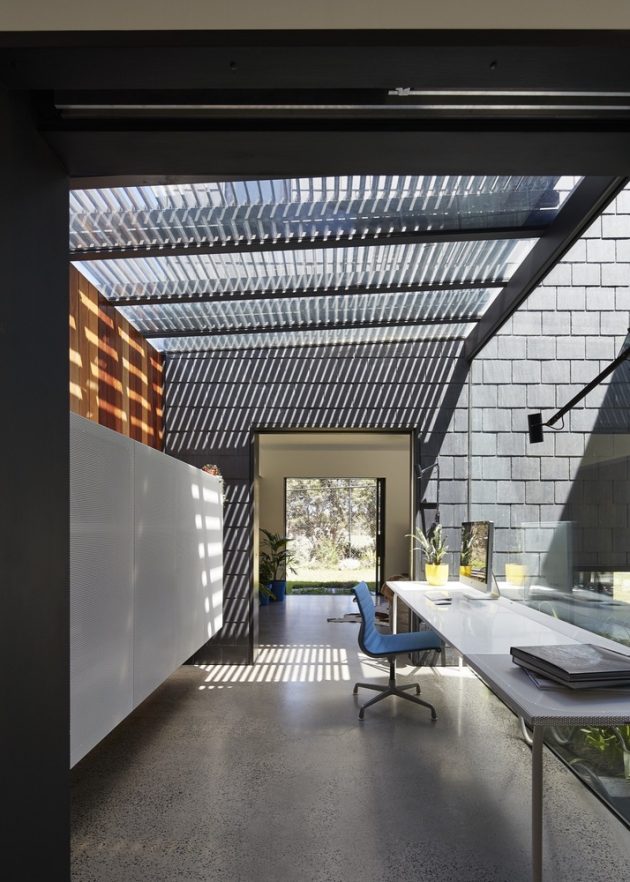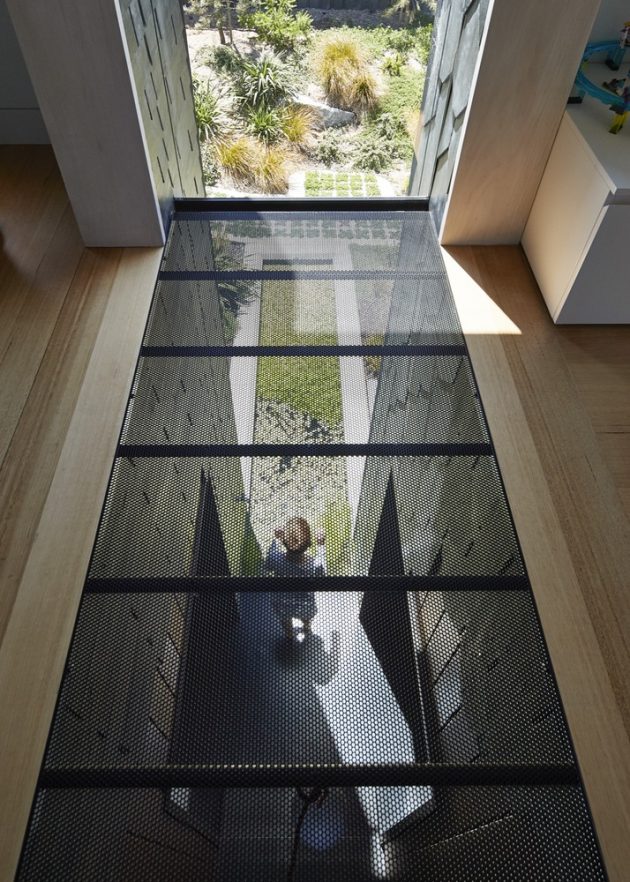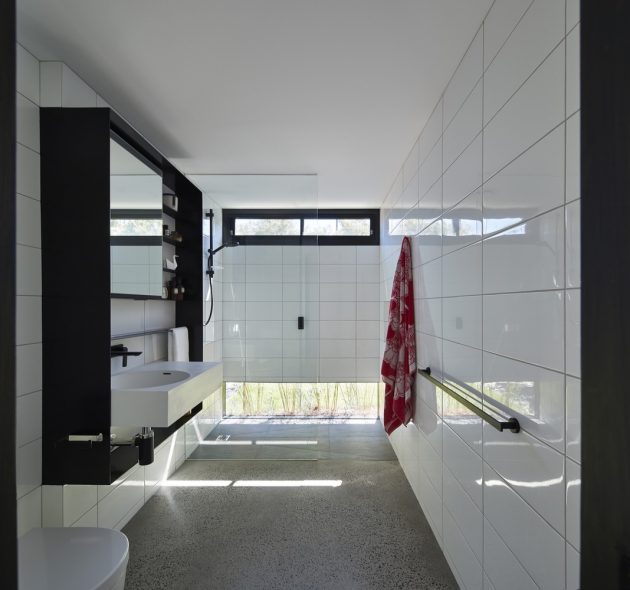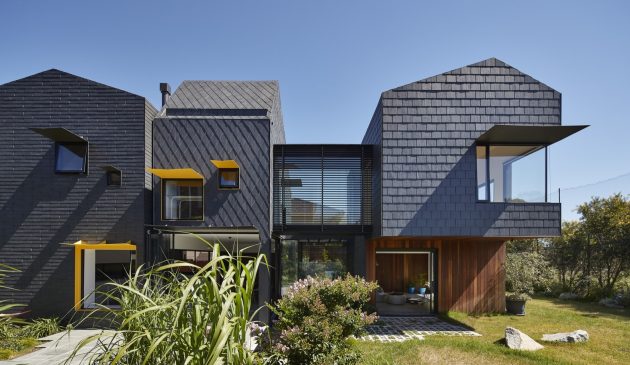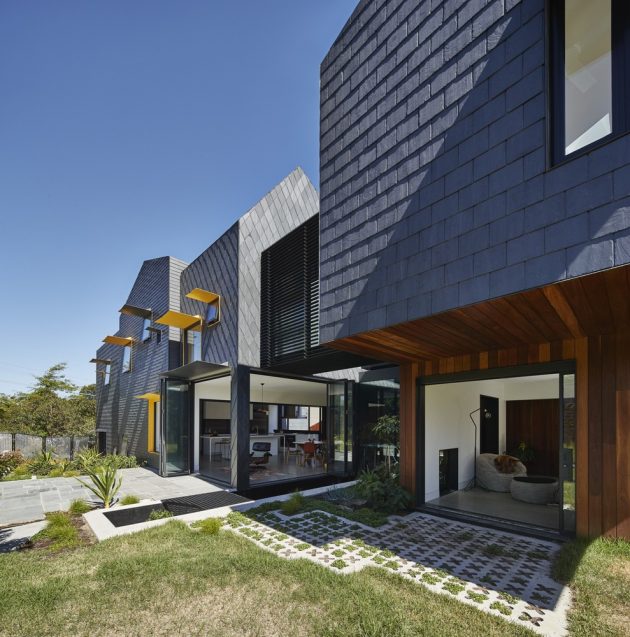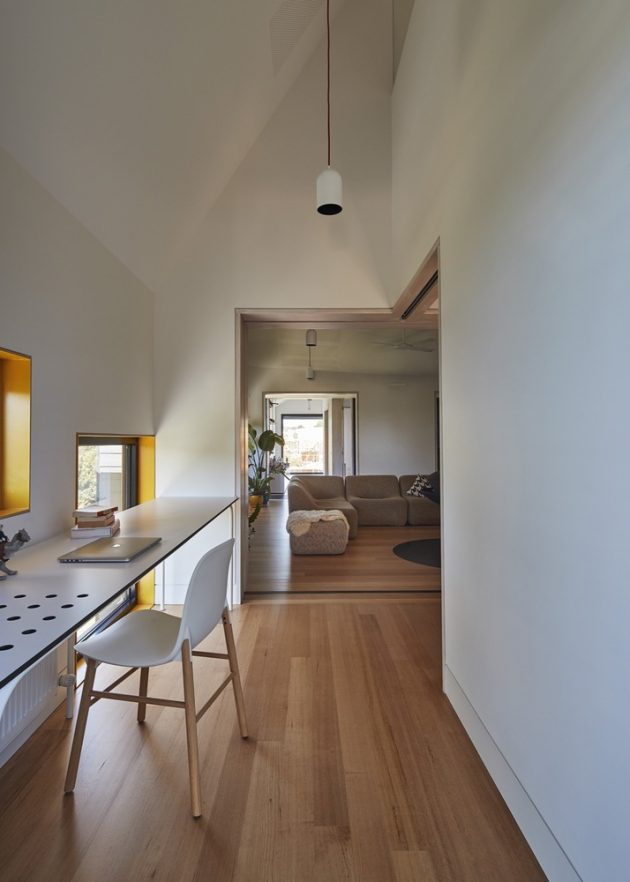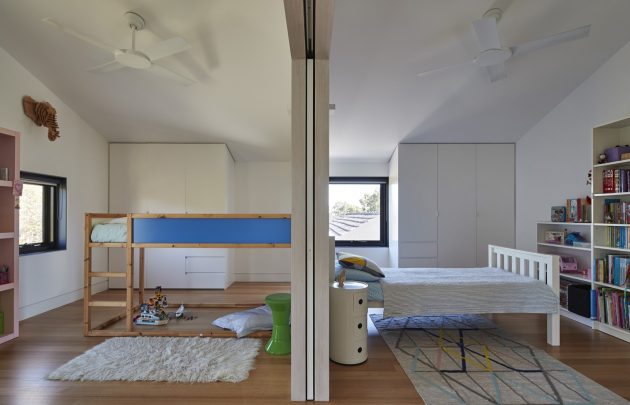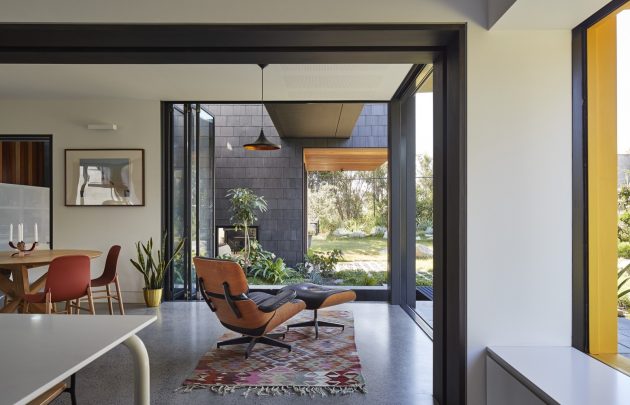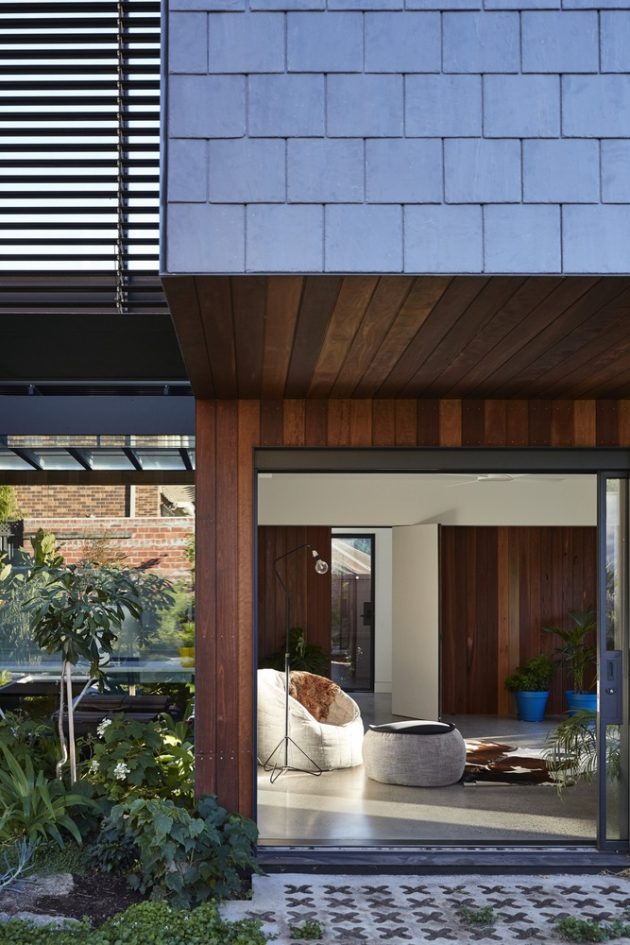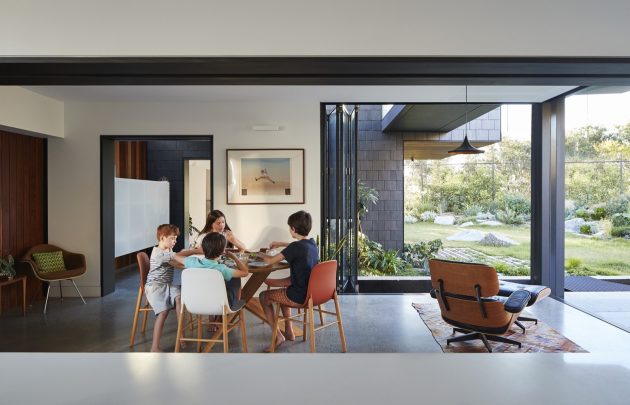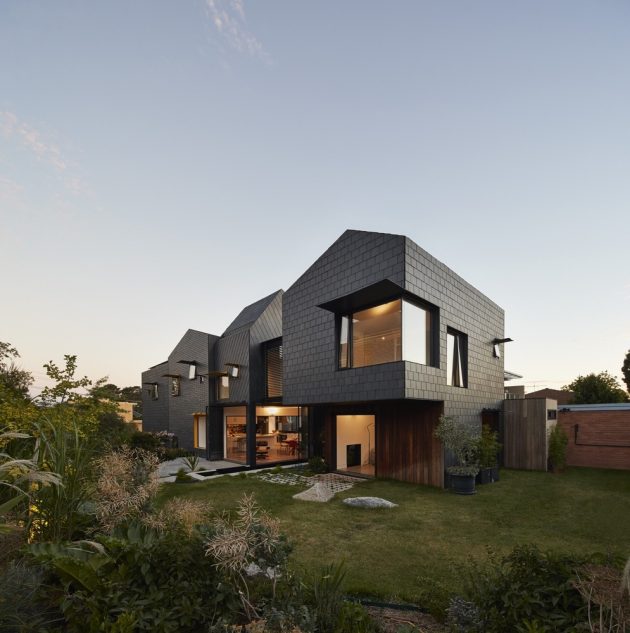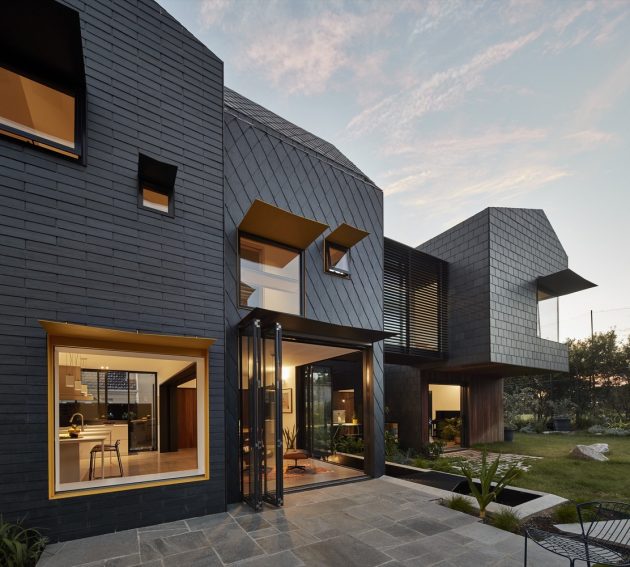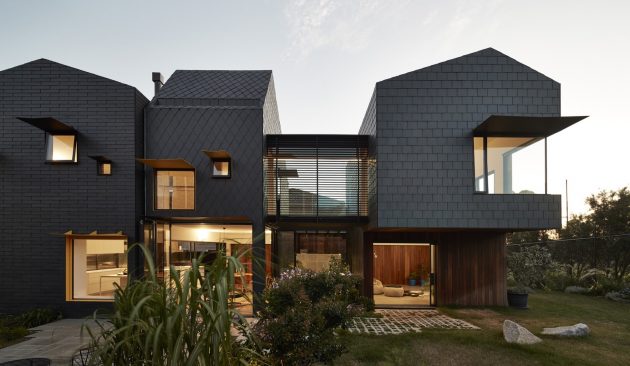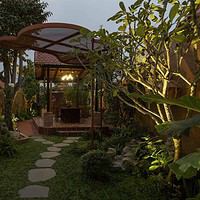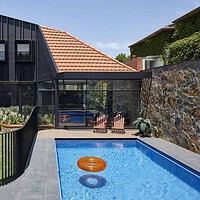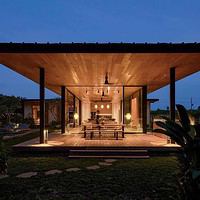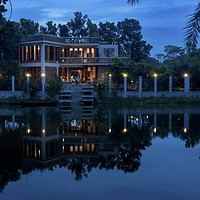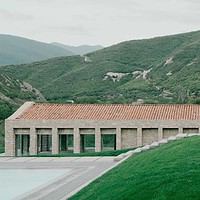Project: Charles House
Architects: Austin Maynard Architects
Location: Kew, Melbourne, Australia
Area: 3,745 sq ft
Photographs by: Peter Bennetts
Charles House by Austin Maynard Architects
Kew, the inner suburb of Melbourne, Australia is the location of a new project by Austin Maynard Architects.
The Charles House is an adaptable home designed for multiple generations but perhaps its most recognizable feature is its exterior which is clad with slate patterns.
Its mass has been deliberately broken down into multiple pieces in order to prevent the home’s exterior from dominating the street. The owners wanted this home to give them at least 25 years of living spaces that wouldn’t need to be changed much while still being able to adapt to their children’s requirements as well as accommodate the grandparents in the near future. See how it was done below!
Housing affordability, childcare and aged-care offer some of the biggest challenges in Australian society. Austin Maynard Architects proposes an adaptable multi-generational home in their latest project, Charles House.
In Brief
The clients wanted a house they could live in for at least 25 years. They wanted a home that would grow with the family, anticipating and accommodating different demands at each stage. They wanted a home that could adapt to the needs of their young children as they grew into adulthood, and a place where they could comfortably accommodate grandparents in the near future. They asked for a practical, low maintenance house and garden filled with light and water features and blurred distinctions between the indoors and outdoors.
Siting/Context
Charles is sited in the upmarket suburb of Kew, Melbourne, on a street lined with McMansions and mock Georgian townhouses. Whilst some neighbouring buildings compete for attention and status our challenge was to create a home that didn’t dominate the street and was imbedded in gardens. We aimed to create a home that didn’t have a tall defensive fence, but instead offered openness and life to the street.
The house is sited on the southern edge of an east/west block, to provide all the living spaces northern sun and direct access to the garden. The garden runs from the street to the school sports fields at the rear of the site, rethinking the suburban backyard and allowing a visual connection through, creating a continuous green strip.
Intended to house a family of five, plus grandparents, Charles is a large home relative to our other projects, yet it is small compared to many of its neighbours. To break down the large mass, a number of forms are linked together, each given their own personality by using different slate patterns. Two sections of these forms are lined with bridges and ponds that run out to the garden. The external slate cladding flows through inside in certain areas, which reinforces the separation further.
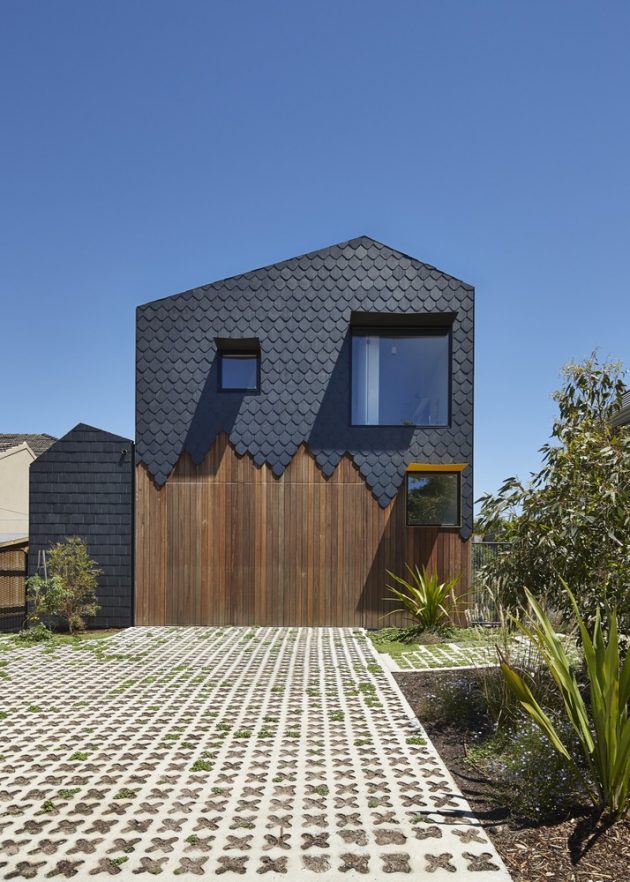
Multi-generational & spacial flexibility
Multi-Generational housing is a double edged sword. It is wonderful in many ways – a diverse family home is often a healthy family home. However, Multi-Generational homes also reflect the nature of our economy and the dire consequences of housing un-affordability.
Though we approve of increasing the number of people in a home, we also approve of a broader support network from each member of the family unit. We welcome a more complex understanding of what family means and recognise modern urban isolation, longer work days, child care difficulties, increases in retirement costs and the inaccessibility to quality affordable housing – for not only our young, but increasingly the elderly.
The ground floor layout of Charles offers flexibility of space and function. A music/ living room, can become a student den or a Granny flat/apartment, with its own bathroom and direct (wheelchair-friendly) garden access. This is a truly adaptable space that can either extend the families living areas, or be closed off to be its own independent zone. For now this space is for the family to share music, to read and to rest. In a few years it will become a home to Grandparents.
Upstairs, the kid’s bedrooms open up to each other, onto hallways and the living area, as well as the study. All spaces can be opened up or isolated according to ages/functions/uses. As the children grow and change, their spaces can adapt to suit their level of engagement with their home and their family. The parent’s room, with walk-in-robe and ensuite, is separated visually and physically, as it is accessed via a bridge.
The natural beauty of slate
A covenant demanded that any new home built on the site be clad in stone. While there are many recently erected McMansions in the area made of brick, stone and tile, there are also a number of wonderful older homes that were crafted over a century ago. We loved the lichen covered slate roofs on many of these old Edwardian, Federation and Victorian homes and were keen to respond to and connect with this rich material history, without copying or creating a pastiche of the past.
The slate contractors (Slate Roof Service Company) engaged to clad Charles are responsible for the care and maintenance of some of Melbourne’s most important heritage buildings, including the Victorian Parliament and Carlton Garden’s Exhibition Building. During their many decades of working with slate these seasoned craftsmen were excited by the challenges of applying their craft to vertical walls, rather than just the roof. Each of the patterns used on the various facades are patterns recommended by the contractors, from their years of experience working with slate. The beauty, skill and detail usually lost to the sky up on the roof, can be appreciated close up at Charles.
Sustainability
With its double stud walls, bulk insulation, solar array, water collection, double glazing, adjustable sun shading and siting, Charles is one of our most sustainable homes.
Rather than simply extruding the existing structure we have and run the new form along the southern boundary, so that it is bathed in northern sunlight. Windows are all double glazed and have protection – awnings, external blinds and adjustable louvres – designed to optimise passive solar gain in winter whilst minimising solar gain in summer, thereby drastically reducing demands on mechanical heating and cooling. The ponds offer further passive evaporative cooling. Solar panels with micro-inverters cover parts of the new roof and water tanks provide ample water for the gardens and the toilets. High performance insulation is everywhere. Where possible we have sourced local trades, materials and fittings.
Landscape design, by Bush Projects
The residents asked for a garden they could use, that would interest the children in plants and to provide a setting for long term engagement between the inhabitants of the house and the landscape they live in.
An eclectic combination of native and indigenous plants, as well as a mix of ornamental and edible planting, runs along the length of the house and responds to the inhabitants requirements, including a soccer pitch, outdoor areas for dining and play, vegetable & herb gardens and two large fish ponds. The new bush landscape of primarily indigenous plants within the front yard introduces valuable biodiversity, already well appreciated by local insects and birds. The garden locates the house in its particular setting with a nod to its pre-colonial landscape.
Progress through the space sees the landscape change into a domestic jungle, where oversized leaves and grasses immerse the visitor at a scale that reflects the size of the house.
The distinct architecture of Charles House required a landscape that responded and connected to its form in a direct way. The folding up and out of the outdoor spaces connects visually with the folded tabs in the facade of the house and the deep slices of pond and glass connect the inside and outside from several points. The permeable pathway ramps up and down to match the levels of the internal spaces providing an accessible route to each of the entry/exit points to the interior spaces.
As the outdoor areas wrap around the entirety of the house it is visible from many perspectives within the building. This required the landscape to be able to be read from many aspects. Careful attention was paid to the site reading as a landscape by using the materials of slope, topography, rock, water and planting, which allows the outdoor spaces to be experienced in many ways and at many points, both visually and sensorially.
The property backs onto a large school oval with its large cricket net fence and mature eucalyptus trees . The outdoor spaces utilise these borrowed views by not concealing the perimeter of the property making the areas surrounding the house seem expansive. The aspect of the main bedroom takes in the view of the schools domed chapel and it was important for this view to be enhanced and retained.
The house and its outdoor spaces encourage connection between the interior and exterior spaces, all year round.

